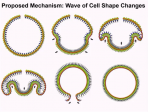 00:25:00
00:25:00
Physical perspective on cytoplasmic streaming
Professor Ray Goldstein FRS is the Schlumberger Professor of Complex Physical Systems at the University of Cambridge. Here he describes a biological example of topological inversion, with relevance to engineering problems in human technology.
More details | Watch now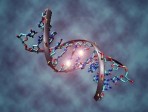 01:17:00
01:17:00
Genetics, epigenetics and disease
The human genome sequence has been available for more than a decade, but its significance is still not fully understood. While most human genes have been identified, there is much to learn about the DNA signals that control them. This lecture describ....
More details | Watch now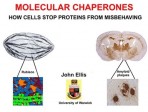 01:04:00
01:04:00
Molecular chaperones: how cells stop proteins from misbehaving
Proteins are the action molecules of all cells, and to function properly, protein chains must fold and assemble correctly. But each chain of every protein runs the risk that it will combine with one or more identical chains to form nonfunctional aggr....
More details | Watch now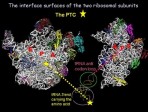 01:03:00
01:03:00
From bears’ winter-sleep to advanced antibiotics
Professor Ada Yonath, Weizmann Institute of Science, Israel. To facilitate instant recovery of active life once bears wake up from their winter sleep, nature provides ingenious mechanism based on periodic packing of their ribosomes, the cellular ma....
More details | Watch now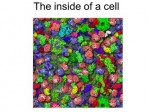 01:07:00
01:07:00
Finding patterns in genes and proteins: decoding the logic of molecular interactions
Dr Sarah Teichmann is based at the MRC Laboratory of Molecular Biology at the University of Cambridge. In the post-genomic era, high-throughput methods are providing us with a deluge of data about genes and proteins. What knowledge about biology do....
More details | Watch now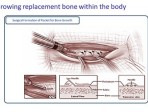 00:58:00
00:58:00
Regenerating organs and other small challenges
A disagreeable side effect of longer life-spans is the failure of one part of the body – the knees, for example – before the body as a whole is ready to surrender. The search for replacement body parts has fueled the highly interdisciplinary fiel....
More details | Watch now 00:31:00
00:31:00
Networks in ecosystems and financial systems
This talk surveys our growing understanding of the relationships between the network structure of ecological networks ? both in mathematical models and in the real world ? and their ability to withstand disturbance, natural or human-created.
More details | Watch now 01:02:00
01:02:00
Thinking like a vegetable: how plants decide what to do
Plants monitor a wide range of information from their surrounding environment. They combine information of multiple sorts, and respond in an appropriate way. In plants there is no brain, and the information processing is distributed across the plant ....
More details | Watch now 01:12:00
01:12:00
Brain development and brain repair.
The human brain is made up of close to a trillion nerve cells (or neurons), each of which makes connections with, on average, hundreds of other nerve cells, to form the complex neuronal circuits that control all brain activities, including perception....
More details | Watch now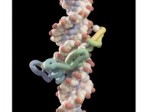 01:08:00
01:08:00
Engineered zinc finger proteins and gene expression
It has long been the goal of molecular biologists to design DNA binding proteins for the specific control of gene expression. The zinc finger design, discovered by Sir Aaron Klug 20 years ago, is ideally suited for such purposes, discriminating betwe....
More details | Watch now 01:12:00
01:12:00
Deciphering disease: cells and disruption of their communication
The human body may seem to be no more than a bundle of tissues and organs, yet the cells these are made from are capable of interacting, communicating and performing complex tasks. Our cells' capacity to interact in this way enables humans to adapt t....
More details | Watch now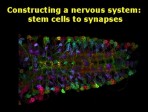 00:58:00
00:58:00
Stem Cells to Synapses
One of the goals of research in neurobiology is the repair and regeneration of neurons after damage to the brain or spinal cord. Before we can understand how to repair the nervous system we must first learn how the nervous system is put together.
More details | Watch now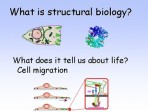 01:03:00
01:03:00
Structure and the living cell
In this lecture Iain Campbell will discuss methods of studying the structure of molecules and cells and how they have advanced in the 350 years since early microscopes gave the first glimpse of single cells. He will show how modern methods are allowi....
More details | Watch now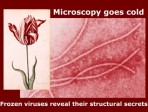 01:05:00
01:05:00
Microscopy goes cold: secrets of frozen viruses
Viruses are a major cause of death and disease. Too small to be seen by light microscopy, they were first visualised about 50 years ago by electron microscopy. Dr. Crowther describes his work on the development of the methods and illustrates how he h....
More details | Watch now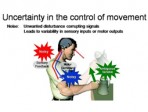 01:08:00
01:08:00
The Puppet Master: How the brain controls the body
The effortless ease with which humans move our arms, our eyes, even our lips when we speak masks the true complexity of the control processes involved. Professor Daniel Wolpert explains how the brain deals with this and can perform optimally in the p....
More details | Watch now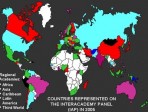 01:19:00
01:19:00
Beyond the human genome project
Dr Lander and his colleagues have developed many of the key tools and generated many of the key information resources for modern mammalian genomics. Their work includes mapping and sequencing of the human, mouse, and other genomes. He was elected a m....
More details | Watch now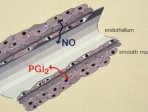 01:09:00
01:09:00
Adventures in vascular biology
Thirty years ago it was thought that the endothelium, a layer of thin, flat cells that line the interior surface of blood vessels was inert. However, major discoveries since then have demonstrated that it is a highly metabolic organ involved in maint....
More details | Watch now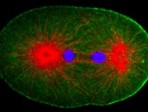 01:05:00
01:05:00
Genes, worms and the new genetics
A surprising finding over the past 20 years is that all animals have many of the same genes and that they use them in similar ways to grow and develop. These similarities mean that much of what is learned about what genes do in simple animals such as....
More details | Watch now 01:13:00
01:13:00
Magnetic brain stimulation and brain function?
Like his nineteenth century contemporaries David Ferrier tried to reveal cerebral localisation of function by direct electrical stimulation of the exposed brain of animals. With some notable exceptions the results were disappointing and confined to t....
More details | Watch now 01:08:00
01:08:00
Perception, deception and reality
Sir David Attenborough delivers the 2003 Michael Faraday Lecture entitled: Perception, deception and reality
More details | Watch now 01:15:00
01:15:00
Vision for knowledge: Knowledge for vision
An evolutionary development of perception is suggested - from passive reception to active perception to explicit conception - earlier stages being largely retained and incorporated in later species. A key is innate and then individually learned knowl....
More details | Watch now 01:00:00
01:00:00
Science not stamp collecting? Botany from 1759 to 2059
Professor Hopper considers the vital role that the study of plant taxonomy and systematics has played in plant science. He considers, in particular, how these fields are transforming to meet the needs of 21st Century science as we address the challen....
More details | Watch now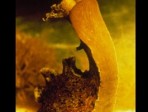 01:23:00
01:23:00
We are what we remember.
n this lecture, Eric R Kandel considers the neural systems and molecular mechanisms that contribute to learning and long-term memory and discusses how our insights into memory storage are allowing us to understand various forms of age related memory ....
More details | Watch now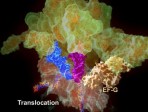 01:02:00
01:02:00
Reprogramming the code of life
The information for synthesizing the molecules that allow organisms to survive and replicate is encoded in genomic DNA. In the cell, DNA is copied to messenger RNA, and triplet codons in the messenger RNA are decoded in the process of translation to ....
More details | Watch now 01:00:00
01:00:00
The new biology of ageing
Research into ageing has been rejuvenated by the discovery of mutations in single genes that extend the lifespan of laboratory animals. Some of the signalling pathways involved, particularly the insulin/Igf-like pathway, have effects on lifespan acro....
More details | Watch now 01:16:00
01:16:00
A molecular window into speech and language
Our capacity for complex speech and language remains one of the most intriguing aspects of being human. It has long been suspected that some answers to this enigma will be found buried within the genome. With recent advances in genetic technologies, ....
More details | Watch now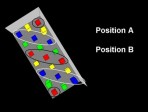 01:01:00
01:01:00
Mapping memory: the brains behind remembering
Historically memory research has focussed on the hippocampus, a structure deep in the brain's temporal lobes. Damage to the hippocampus is known to have a devastating impact on the ability to form new memories as well as compromising recollection of ....
More details | Watch now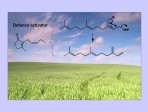 01:08:00
01:08:00
Plant and animal communication
Organisms of all kinds use signals comprising minute amounts of natural chemicals. The exploitation of semiochemicals is demonstrated with dramatic success in the management of pests and parasitic weeds in resource-poor East African cereal farming.
More details | Watch now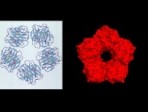 01:08:00
01:08:00
From proteins to drugs
The normal proteins which circulate in human blood are either known or presumed to have beneficial functions. However normal immunity and inflammation proteins can cause or exacerbate disease in addition to helping to resist infections.
More details | Watch now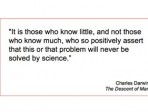 01:06:00
01:06:00
Decoding consciousness
Everything we know about the world comes to us through our brain. Yet for each of us our own conscious mental world of thoughts and feelings is isolated and private. Despite centuries of research, language or gesture remains the only way we can disco....
More details | Watch now
